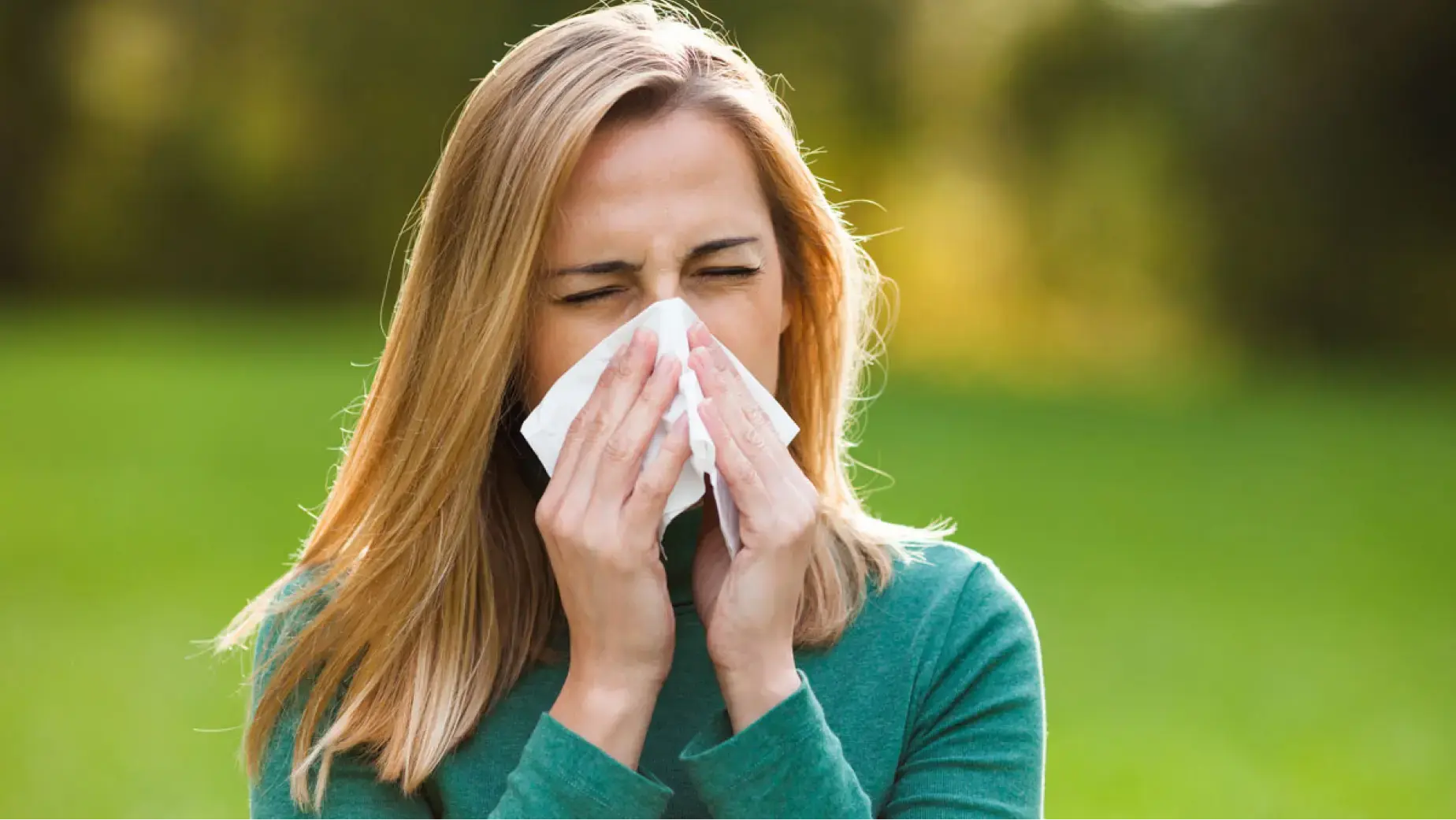What Are Hives?
Hives, also known as urticaria, are raised, itchy welts that can range in size and appear on skin across the body.
Hives can affect anyone, regardless of age or season, and are caused by your body reacting strongly to an allergen. Urticaria symptoms can go away quickly, in less than six weeks (acute hives), or last for more than six weeks (chronic hives).1
What Do Hives Look Like and Feel Like?
So, what are hives on skin?They're characterized by red, raised welts or bumps that can vary in size and shape. These welts can be small spots or large patches and may appear anywhere on the body, including the face, arms, legs, and torso.
What do hives feel like? Hives often cause significant swelling and inflammation, leading to intense itching. The skin may feel hot to the touch, and in some cases, hives can be accompanied by a fever or pain.1
Rash vs hives
Hives are a type of rash — however, not all rashes are hives. A rash can manifest in a number of ways on skin, including as redness, blisters, scaly patches, bumps, or welts.
Rashes can be caused by a wide range of factors including infections, irritants, and heat. Some rashes may not be as itchy or raised as hives.2
Hives vs eczema (atopic dermatitis)
Eczema (atopic dermatitis) is a chronic skin condition that causes dry, itchy, and inflamed skin. While it can look similar to hives, eczema typically appears as patches of rough, scaly, or raised bumps on skin that occasionally ooze and crust. It is often found on the elbows, knees, and face.
Eczema can have many different triggers, including pollens, sweat, dander, dust mites, other infections, stress, or contact with irritants like wool or soap.3,4
Contact dermatitis vs hives
Contact dermatitis is a skin reaction that occurs when the skin comes into contact with an irritant or allergen. It can cause itchy red blotches on skin or sometimes blistering. Unlike hives, contact dermatitis is usually limited to the area of contact and may take longer to resolve.5
Psoriasis vs hives
Psoriasis is a chronic autoimmune condition characterized by inflamed, raised red patches on skin that can develop into thick, scaly patches. These patches may become silvery and can be itchy.
The cause of psoriasis isn’t known, but it may be triggered by sunburn, certain classes of medicines, tobacco, alcohol, infection, or stress. It usually requires specific treatments, such as topical creams and light therapy.6
It’s essential to consider the appearance, duration, symptoms, and possible triggers of a skin condition in order to accurately diagnose it. Consult a healthcare professional for proper diagnosis and treatment if you are unsure whether you have hives or another skin condition.
What Causes Hives?
Breaking out in hives for no apparent reason? Getting to the root might be a mystery at first, but what causes hives on skin can sometimes be attributed to allergic reactions, infections, physical triggers, stress, autoimmune disorders, and certain medications.
Let’s look at these triggers more closely:7
Hives due to allergic reaction
Allergic reactions are one of the most common causes of hives. Specific allergens that trigger hives include:7,8
Foods: Such as nuts, shellfish, eggs, and dairy products.
Medications: Antibiotics, pain relievers, and some blood pressure medications can cause hives.
Insect bites and stings: Reactions to bee stings, mosquito bites, and other insect bites can lead to hives.
Latex: Some people are allergic to latex, which can cause hives upon contact.
Infections
Infections, both viral infections (most common) and bacterial infections, may trigger hives.9
Physical triggers
Physical triggers can cause hives by directly affecting the skin. These triggers can include heat, cold, pressure, and more.10
Anxiety and stress hives
Stress can also lead to hives. Emotional stress can cause the body to release histamines, which can result in hives.11
Autoimmune disorders
Autoimmune disorders, where the body's immune system attacks its own tissues, can cause chronic hives. Conditions like lupus and thyroid disorders can be associated with hives.12
Certain medications
Some medications can cause hives as a side effect.8 These include:
Antibiotics: Such as penicillin and sulfa drugs.
Nonsteroidal Anti-Inflammatory Drugs (NSAIDs): Like aspirin and ibuprofen.
Blood pressure medications: Such as ACE inhibitors.
Unexplained hives
Sometimes, the cause of hives is not immediately apparent. This is known as idiopathic urticaria. If you are breaking out in hives for no apparent reason, it's important to consult a healthcare professional to rule out underlying conditions.13
What Are the Different Types of Hives?
There are various types of urticaria (hives), which can vary in duration. Here's a brief overview:
Occasional (acute) hives
Occasional hives, also known as acute urticaria, are hives that last for less than six weeks.1 These are often caused by allergic reactions to foods, medications, or environmental factors. They can also be triggered by infections or physical stimuli like heat, cold, or pressure. Acute hives are usually sudden and can be very itchy, but they tend to resolve on their own or with treatment.
Chronic hives
Chronic hives, or chronic urticaria, are hives that persist for more than six weeks.1,18 The exact cause of chronic hives is often difficult to determine and can be due to a variety of factors, including:
Heat hives: Caused by exposure to high temperatures.
Cold hives: Triggered by cold temperatures or cold objects.
Pressure hives: Result from prolonged pressure on the skin, such as from tight clothing.
Solar hives: Caused by exposure to sunlight.
Non-itchy hives
While hives are typically itchy, some people may experience non-itchy hives. These hives can still be raised and red but do not cause the intense itching associated with typical hives. Non-itchy hives can be a sign of a different underlying condition and should be evaluated by a healthcare professional.14
Hives at night
Some people experience hives primarily at night, which can be particularly disruptive to sleep. Nighttime hives can be caused by a variety of factors, including:15,16
Increased histamine levels: Histamine levels can rise at night, leading to hives.
Allergens: Exposure to allergens in bedding, clothing, or other items near bedtime — such as pet dander or pollen — can cause hives.
Shift work: Night shift work can disrupt your natural sleep-wake rhythm, potentially leading to hives at night.
References
Cleveland Clinic. Hives. Published 2022. Accessed January 31, 2025. https://my.clevelandclinic.org/health/diseases/8630-hives
Cleveland Clinic. Skin Rash. Published 2023. Accessed January 31, 2025. https://my.clevelandclinic.org/health/diseases/17413-rashes-red-skin
American Academy of Allergy, Asthma, & Immunology. Allergic Skin Conditions. Published 2023. Accessed January 31, 2025. https://www.aaaai.org/tools-for-the-public/conditions-library/allergies/allergic-skin-conditions
NHS. Atopic eczema. Published 2024. Accessed January 31, 2025. https://www.nhs.uk/conditions/atopic-eczema/
Mayo Clinic. Contact dermatitis. Published 2024. Accessed January 31, 2025. https://www.mayoclinic.org/diseases-conditions/contact-dermatitis/symptoms-causes/syc-20352742
Johns Hopkins Medicine. Psoriasis. Published 2025. Accessed January 31, 2025. https://www.hopkinsmedicine.org/health/conditions-and-diseases/psoriasis
Merck Manual. Some Causes and Features of Hives. Published 2023. Accessed January 31, 2025. https://www.merckmanuals.com/home/skin-disorders/itching-and-dermatitis/hives?query=night%20hives#Evaluation_v6665617
DermNet. Drug-induced urticaria. Published February 2020. Accessed Mach 14, 2025. https://dermnetnz.org/topics/drug-induced-urticaria
American College of Allergy, Asthma & Immunology. Hives. Published June 2018. Accessed Mach 26, 2025. https://acaai.org/allergies/allergic-conditions/skin-allergy/hives/
Merck Manual. Physical Allergy. Published 2024. Accessed January 31, 2025. https://www.merckmanuals.com/home/immune-disorders/allergic-reactions-and-other-hypersensitivity-disorders/physical-allergy
Cleveland Clinic. Are Stress Hives a Real Thing? Published 2024. Accessed January 31, 2025. https://health.clevelandclinic.org/why-am-i-breaking-out-in-hives-when-im-stressed
American Academy of Allergy, Asthma & Immunology. Hives (Urticaria) and Angioedema Overview. Published June 2024. Accessed March 26, 2025. https://www.aaaai.org/tools-for-the-public/conditions-library/allergies/hives-(urticaria)-and-angioedema-overview
Asthma and Allergy Foundation of America. Hives (Urticaria). Published October 2015. Accessed March 26, 2025. https://aafa.org/allergies/allergy-symptoms/skin-allergies/hives/#:~:text=We%20call%20these%20types%20of,chronic%20idiopathic%20urticaria%20(CIU)
Schettini N, Corazza M, Schenetti C, Pacetti L, Borghi A. Urticaria: A Narrative Overview of Differential Diagnosis. Biomedicines. 2023; 11(4):1096. https://doi.org/10.3390/biomedicines11041096
Huang, Y., Jing, D., Su, J., Huang, Z., Liu, H., Tao, J., He, M., Chen, X., Shen, M., & Xiao, Y. (2021). Association of night shift work with chronic spontaneous urticaria and effect modification by circadian dysfunction among workers.9. https://doi.org/10.3389/fpubh.2021.751579
Christ P, Sowa AS, Froy O, Lorentz A. The Circadian Clock Drives Mast Cell Functions in Allergic Reactions. Front Immunol. 2018;9:1526. Published 2018 Jul 6. doi:10.3389/fimmu.2018.01526
American Academy of Dermatology Association. Hives: FAQs. Published 2024. Accessed January 31, 2025. https://www.aad.org/public/diseases/a-z/hives-overview
Ben-Shoshan, M., Kanani, A., Kalicinsky, C. et al.Urticaria. Allergy Asthma Clin Immunol 20 (Suppl 3),64 (2024). https://doi.org/10.1186/s13223-024-00931-6
Links to other parties’ articles and websites are provided for convenience only. Kenvue is not responsible for their content.




